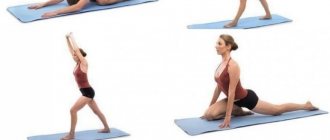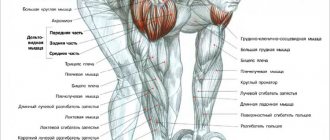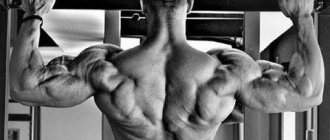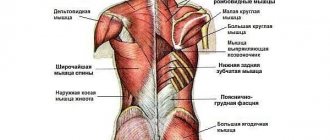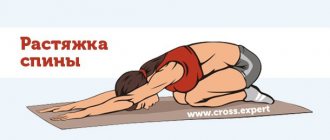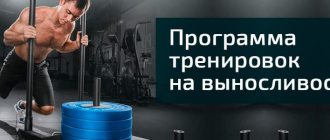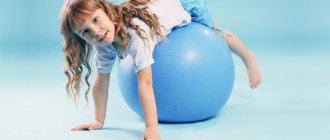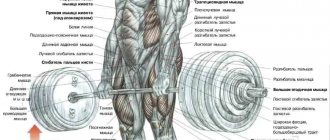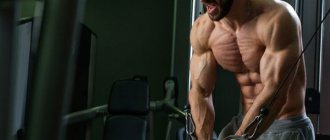Exercises to correct posture help maintain healthy back muscles and spine. Thanks to gymnastics and daily yoga, you can become the owner of a straight back and a stately figure, even at home. It is absolutely not necessary to sign up for a gym for this.
If you do not have serious pathologies of the spine or severe chronic diseases, you will be able to maintain your posture with the help of special exercises. The main thing is to do them regularly and make sure that the body is in the correct position throughout the day. Not an easy task for those who have been accustomed to slouching since childhood. But to achieve the desired result, you will have to work on yourself.
Top 10 exercises for posture
If you want your back to be straight and beautiful, it is enough to train for 20-30 minutes a day. After 1-2 months of training, you yourself will notice positive changes.
It is important to remember that some exercises are contraindicated for pain and disorders of the spine.
For example, a plank can be harmful to health if there is an intervertebral hernia. Why you should refrain from this exercise can be read here. Thus, if you have back problems (pain, impairment), you should consult your doctor before creating a training program.
Exercise 1: Swimmer
Lie face down on the floor. Stretch your straightened arms forward, do not cross them, but keep them shoulder-width apart. Also straighten your legs and spread them slightly.
Now alternately lift your left arm and right leg, and then your right arm and left leg. Try to reach up with your fingertips. In the top position, you must hold back for at least a second.
Exercise 2: Elbow Plank
Lie on the floor on your stomach. From this position, rise to your elbows and rest your toes on the floor. Stretch out in a straight line, do not arch your back (it should be straight) and do not touch your knees to the floor. Hold this position for as long as possible until your muscles are completely tired. Beginners should stand in the plank for about 1 minute, experienced athletes for at least 5.
Read more about the plank in the material “Plank – how much to do, benefits and harms, technique of execution”,
Exercise 3: Low Lunge
Step forward with your right leg, bending it at the knee, take your left leg as far back as possible, taking a deep lunge pose. At this time, you can put your hands on your waist or stretch them up, keep your back straight.
Smoothly lower your pelvis down, performing light springing movements. Try to hold this position for a few seconds. Perform the exercises alternating your right and left legs.
Exercise 4: Glute Bridge
Another good exercise to improve your posture at home.
Lie on your back. Place your shoulders and feet with your knees bent on the floor surface. Now gently lift your pelvis, tensing your gluteal muscles. At this time, the arms should be extended along the body or gathered in a lock under the body. In the top position, the torso from the knee joints to the shoulder blades should be extended in a straight line. Hold this position for a few seconds, then return to the starting position, lowering your pelvis.
Exercise 5: Dog
Get on all fours, placing your palms on the floor. Extend your right arm forward and lift your left leg back up. Pull your stomach in, your abdominal muscles should be tense to the maximum. The arm and leg in the top position are parallel to the floor surface or slightly higher.
Exhaling, pull the elbow of the upper limb towards the knee joint, carefully twisting in the body. Take the starting position. Do not relax while performing the movement, keep your muscles tense.
Hatha yoga to correct posture
It has been noticed that teenagers often slouch. Some people don’t like their height, others are simply not accustomed to walking with a straight back since childhood, and as a result, their torso acquires an incorrect position.
In order for teenagers to have excellent bearing, it is necessary to perform a light complex:
- lie down on the mat, trying to press your entire body to the floor, drawing in your stomach.
- in a supine position, raise your legs at an angle of 45°.
- raise straight legs at an angle of 90°.
- position on your back, arms extended, knees bent, feet on the mat, try to raise only your head and shoulders.
- in the same position, raise only your chest, arching your back.
- in the same position, lift only your buttocks, arching your back, keeping your shoulders and heels pressed to the floor.
After a few weeks, you will notice that the teenager has the correct bearing.
See more exercises to correct posture in teenagers
Such exercises will also be useful for an adult. Correcting posture in adults requires a lot of effort. Here you will find everything you need to straighten your spinal column.
Exercise 6: Boat
Take a lying position on your stomach. Stretch your arms forward, placing your palms together. Gently bend over, simultaneously raising your arms and straight-out legs. Try to stay in the top position for a few seconds, then return to the starting position.
Exercise 7: Lock your hands
Sit on the floor, cross your legs, or simply position yourself in a comfortable position. Place your left hand behind your head and your right hand behind your back so that your fingers can be joined into a lock behind your back. If you find it difficult to do this at first, simply touch the fingertips of both palms. If pain occurs, do not overcome yourself, do not stretch the muscles too much. As you perform the movement, alternate hands.
Exercise 8: Support
Stand facing a wall at a wide stride distance. Now lean forward and rest your palms on it. Place your feet together. Perform smooth bends while keeping your back straight.
Exercise 9: Cat-cow
Get on all fours, placing your palms on the floor at shoulder width. Make sure your arms remain straight and your legs are bent at right angles.
As you exhale, slowly round your lower back and thoracic spine. Feel your shoulder blades moving apart. The back should stretch. Lower your head down, direct your gaze to your navel. As you inhale, carefully return to the starting position. Next, also standing on all fours, bend your back at the lower back while inhaling, stretching your head up. Move from one position to another for 10-15 breaths.
Exercise 10: Sphinx Pose
Lie face down on the floor, straighten your legs and place your feet together. Bend your elbow joints slightly and place your palms on the floor.
After inhaling, gently lean your chest forward, simultaneously squeezing your shoulder blades together and lowering your shoulders as low as possible. Don't lower your head, keep your chin up. Keep your gaze straight ahead and concentrate on doing the exercise.
Relieving pain
To relieve pain in the spine, do just three exercises:
- “Cat” - a unique simple exercise that will remove any back pain. Get on all fours, arch your back up, then lower it, bend over. Do it 20 times daily.
- standing on your knees, raise your arms up, lower your buttocks onto your heels, place your palms on the mat, stretch forward, sliding along the floor. Hold on for 30 seconds.
- sit in a half-split position, place your palms on the mat, tilt your head towards the floor. Do 6 times with each leg.
The importance of correct posture
A straight back is not only an attractive appearance, but also good physical health in general. Correct posture helps reduce stress on the spine, muscles and joints, and also prevents them from injury. According to doctors, a person who is accustomed to standing upright uses his muscles much more effectively, his performance and well-being improve.
However, maintaining the desired arch in the lower back is not so easy. To learn “not to slouch” you will have to spend a lot of time and effort. After all, it is very difficult to rebuild brain activity. If a person maintains a certain position over a long period, the brain begins to regard it as the only correct and convenient one. It is also difficult for the body to get used to an unusual position, since an even posture implies the presence of developed muscles. Spinal straightening exercises, which we will discuss further, will help you develop the healthy habit of keeping your back straight.
Correct posture, in addition to its attractive appearance, has health benefits:
- Breathing will become much easier as your lung capacity will increase over time.
- Your health will significantly improve.
- With an even posture, the diaphragm is fully deployed, and accordingly, the voice sounds clearer and louder.
- Excessive stress on the spine, joints and muscles disappears.
- Skeletal bones and muscles are held in the correct position.
- A straight back prevents rapid fatigue, helping to maintain performance throughout the day.
Basic rules for performing exercises
If you are doing posture exercises at home, it is extremely important to follow the basic rules and recommendations of specialists. They minimize the risks of injury or exacerbation.
Basic tips for getting a straight posture when training on your own:
- It is not recommended to conduct classes after a full lunch. It is better to take it 2 hours after eating. You should also not drink a lot, so as not to provoke the appearance of unpleasant heaviness in the stomach.
- Before you start performing a set of posture exercises, you should warm up your muscles well and prepare them for the upcoming load. To do this, you can take a hot shower, visit the sauna and massage them yourself for 10 minutes.
- Each exercise therapy complex for poor posture should begin with a light warm-up. It is important to work all joints consistently. To do this, the head and pelvis are turned, and the body is tilted. Carrying out this procedure allows you to minimize the risk of tissue injury during training.
- Exercises for posture should be carried out at the same time each time. This improves their performance. The morning period is ideal for this, as training will give you a boost of energy.
- The choice of course for straightening posture should be in accordance with the age of the patient. Since training should not provoke fatigue and overload of the body.
One of the complexes for improving posture
To interest a child in gymnastics, it is worth coming up with an interesting story for each exercise, so that the whole process is playful and enjoyable. For adults, it is also important to have the right emotional state before starting a lesson.
Causes of spinal curvature
In normal condition, the spine has natural physiological curves in the thoracic and lumbar regions. However, for a number of reasons, incorrect posture may develop. The most common of them should be listed. So, violations may appear:
- Staying in an uncomfortable position for a long time. Most often this applies to those who, due to their occupation, have to sit for a long time. The same applies to schoolchildren sitting at uncomfortable desks.
- Due to a sedentary lifestyle and weakened muscles.
- As a result of various diseases and injuries affecting the spinal region.
- When a person walks for a long time in incorrectly selected shoes or clothes that force him to take an uncomfortable position.
- If there is a constant deficiency in the diet of vitamins and microelements necessary for the body.
- When systematically performing heavy physical work.
- In the absence of timely correction of postural disorders in childhood and adolescence.
Deep lordosis of the lumbar spine (hyperlordosis)
Lordosis is a completely natural phenomenon.
Along with the common curvature of the lateral surface of the spine among people – scoliosis. Deep lumbar lordosis of the spine often occurs with a sedentary lifestyle. The disease can also be caused by improper exercise in the gym, during which the abdominal and buttock muscles are not used, and the back extensors are overloaded. When doing barbell squats, deadlifts or lunges, you should always pay attention to the technique. Before exercise, you need to activate the gluteal and abdominal muscles, for which you should use resistance bands.
Hyperlordosis can be caused by stress on the lower back during daily activities. Bending or lifting heavy objects with straight legs places significant stress on the lumbar spine. Hyperlordosis can also affect pregnant women with weakened abdominal muscles during pregnancy and after childbirth.
Consequences of poor posture
Timely correction of posture is necessary not only to look attractive. Although, this aspect certainly plays an important role. The habit of slouching can lead to a number of more serious problems:
- Severe pain in almost the entire body, from the neck to the lumbar region.
- Significant reduction in lung volume.
- Compression and even displacement of some internal organs, which inevitably entails various disturbances in their functioning.
- Curvature of the spine, which, in turn, is divided into three types:
- Scoliosis is a lateral curvature of the spinal column, in which the vertebrae also necessarily rotate around a vertical axis.
- Kyphosis is a spinal disease in which the spinal column is curved in the lateral plane with a convexity backwards.
- Lordosis is a physiological or pathological curvature of the spine, which is characterized by a forward displacement of the convexity.
As a rule, people try to straighten their backs at home in adulthood. Although, the root of the problem is usually hidden in early childhood. According to doctors, it is uncomfortable school desks, heavy backpacks and the lack of preventive measures that primarily have a negative impact on the formation of posture.
Ideally, the weight of the briefcase should not exceed 10-15% of the child’s body weight. Only few parents know about this and think about the health of their baby.
In addition, diseases of the spine often cause degenerative-dystrophic diseases, which lead to limited mobility, constant pain and even disruption of the entire musculoskeletal system. We are talking about osteochondrosis, osteoarthrosis, as well as intervertebral hernias.
Contraindications
The exercises presented above to improve posture must be performed carefully, slowly and with full control of movement. If you are unable to achieve a certain position and feel that your muscles are tight, do not try to force your body with force or pressure. If you experience severe pain, stop training.
If you have a history of knee, shoulder, or other joint injuries, these home exercises may be contraindicated. If you have any doubts about whether you can do them, we recommend that you contact your doctor for individual advice.
***
Most postural disorders are associated with a sedentary lifestyle and progressive curvature of the spine. To correct and improve your posture, you need to regularly perform various yoga exercises to stretch and, in particular, to straighten your back.
How to Maintain Correct Posture
To keep your back straight and beautiful, you must follow these rules:
- Always be aware of your body position throughout the day. It doesn’t matter what exactly you do: vacuum cleaner, walk, work, watch TV. Yes, it won't be easy at first. It is unlikely that you will be able to keep your back straight for more than 10-15 minutes without a break. But if you train regularly, over time you will develop the habit of controlling yourself, and your posture will be straight and absolutely natural.
- Maintain an active lifestyle. Don't sit still for a long time, move more.
- Try not to gain excess weight. Excess body weight weakens the abdominal muscles, provokes problems with the hip joints, and causes pain of various types. All this has an extremely negative effect on back health.
- Give preference to comfortable shoes with low heels. Women who love stiletto heels most often suffer from increased stress on their leg muscles and get tired much faster. In addition, systematically wearing high-heeled shoes leads to disruption of musculoskeletal functions. The pelvic axis changes its position, posture is deformed.
- Make sure all work surfaces are at the correct height. When sitting or standing, the edge of the tabletop should be located at the level of the solar plexus. You must always follow this rule, no matter what you are doing: having lunch, working at the computer, or washing dishes.
- If your line of work requires you to sit for a long time, if possible, take dynamic breaks (simple 3-5 minute exercises). This helps relieve muscle tension and relax the neck-shoulder area, which suffers most from prolonged sitting.
The right exercises will help you improve your posture at home or while training in the gym. The main thing is to exercise regularly and monitor your body position throughout the day.
Treatment of postural disorders in children
After establishing the exact cause of poor posture in children, treatment tactics are developed, the nature of which largely depends on the diagnosis. If organic disorders in the structure of the spine have not yet arisen, and there is only a bad habit of stooping, treatment consists of eradicating it. In this case, a large role is given to parents who need to constantly monitor the child and, without psychological pressure, draw his attention to the need to keep his back straight, as well as strictly adhere to other doctor’s recommendations.
If the reason lies in the development of diseases, the therapy will be more complex and multifaceted. It will be aimed not only at improving posture, but also at eliminating the causes that led to spinal deformation, which may also require the use of various medications. But, fortunately, in most cases, poor posture in children can be corrected without the help of surgeons. The main thing is to find a good specialist and strictly follow his recommendations.
The main components of treatment are:
- exercise therapy;
- massotherapy;
- manual therapy;
- hydrotherapy;
- physiotherapy.
If necessary, the child is prescribed to wear an orthopedic corset. It will maintain the spine in the correct position and prevent the worsening of an existing deformity. Thanks to it, parents can slightly loosen control over the position of the child’s back, since the corset will not allow slouching and hunching. An orthopedic corset is selected individually for each child. For minor curvatures, models made of elastic materials with strong Velcro are used, and for more pronounced deformations, rigid orthoses made individually are used.
It is also important to develop and adhere to the correct daily routine for the child and provide him with adequate nutrition. It is necessary to select shoes according to the size of your feet, and not according to your height. It, like the mattress and pillow for sleeping, should be orthopedic. It is important for children to create conditions for full physical activity and sports, as well as to organize the student’s workplace in accordance with his growth.
Exercise therapy
Physical therapy is one of the most accessible and effective ways to correct postural defects in children. The main task of exercise therapy is to strengthen the muscle corset, as a result of which it will provide stronger support for the spine and help keep it in the correct position.
For each child, a complex of therapeutic exercises is developed individually by the doctor. In this case, the type of deformity, the patient’s age, level of physical fitness and existing concomitant diseases are taken into account, which may become a contraindication for performing certain exercises.
It is recommended to conduct classes under the supervision of a specialist. For this purpose, separate groups are formed, by visiting which the child and his parents will learn to correctly perform each proposed exercise so that it brings benefit and not harm. During physical therapy exercises, sudden movements, strong twisting and heavy force loads are not allowed.
For school-age children, good results are achieved by using a rowing machine, an exercise bike, or special gymnastics complexes.
The child must understand that at the slightest discomfort in the back, he must report it to the instructor. If the cause of pain does not lie in the wrong tactics of performing the exercise, you need to consult a doctor for an examination and correction of the exercise therapy program.
The effectiveness of therapeutic exercises directly depends on the regularity and correctness of the exercises. After the child and parents have firmly mastered the methodology of each of them, it is allowed to continue studying at home on their own. It is important to pay attention to physical therapy every day, then a beautiful and stately posture will be developed much faster.
At certain intervals, the child should be shown to the attending physician so that he can evaluate the effectiveness of therapeutic exercises.
Massotherapy
Therapeutic massage involves warming up, kneading and rubbing the muscles of the back and shoulder girdle. This helps to improve blood and lymph flow, relax overly toned muscles and tense overly relaxed ones. This leads to faster restoration of the correct anatomy of the spinal column.
Manual therapy
Manual therapy is one of the most effective methods for correcting postural disorders in children. Since children's joints remain highly mobile and the spine flexible, with the help of competent manual pressure it is possible to quickly restore the normal position of the vertebrae, eliminate functional blocks and achieve a lasting improvement in posture.
But since, unlike therapeutic massage, manual therapy involves working directly with the spine, it requires a high level of qualifications from a specialist, which is confirmed by relevant diplomas, certificates and licenses. It is important to approach the choice of a doctor responsibly, since incorrect selection and implementation of manual therapy techniques can worsen the child’s condition and worsen spinal deformities.
An experienced chiropractor knows a lot of different techniques and techniques, including Gritsenko’s original technique, and also certainly knows how to use them with maximum benefit for the patient. Thanks to a course of manual therapy sessions, it is possible not only to restore correct posture, but also:
- improving the functioning of all internal organs;
- elimination of asthenovegetative syndrome;
- improving memory, attention;
- increasing overall tone and resistance to infections;
- normalization of muscle tone;
- restoration of normal mobility.
Hydrotherapy
Hydrotherapy involves carrying out various water procedures that activate blood circulation and tissue nutrition, and also have antispasmodic, anti-inflammatory and regenerative effects. As part of hydrotherapy, general therapeutic baths with the addition of medicinal substances to the water, thalassotherapy, therapeutic showers, water aerobics, etc. can be used.
It has a positive effect on the condition of the spine and is considered the best way to prevent the occurrence of postural disorders. If you already have spinal deformities, it is recommended to visit the pool at least 2-3 times a week. Classes with a trainer will also help your child learn to swim and will additionally bring a lot of fun, which will help you perceive training not as treatment, but as a game.
Read also
- Climbing exercise – technique of execution, which muscles work, training program
- Exercises with an elastic band for the back are the most effective exercises for a healthy spine and lower back.
- Back exercises at home. 8 most effective
- Exercises on the parallel bars - effective exercises for the arms and back
- Shoulder training: effective exercises, tips, features, training program
Why you need to strengthen your back muscles and watch your posture
The functioning of many systems depends on how straight and healthy the spine is:
- Blood circulation - vascular tone may change if the spine is curved. If your posture is incorrect, hypertension or hypotension, arrhythmia and other health problems may occur.
- Breathing - when the spine is curved or in a hunched state, the volume of the lungs decreases. Organs and tissues are poorly supplied with oxygen, which results in memory deterioration and a gradual increase in dysfunction of internal organs.
- Digestion - slouching depresses the digestive system due to decreased nerve conduction and slower peristalsis. The clinical picture of curvature often includes signs of gastritis and peptic ulcer.
- Nervous system - the spine is the connecting link between all organs and systems and the brain. Curvature provokes neuralgia, paresis and other dangerous conditions.
- Ligamentous-muscular system - with incorrect posture, the distribution of load on joints, muscles and ligaments is uneven. This ends with premature wear of some joints and atrophy of others.
- Excretory system - the kidneys are located almost close to the spine, and incorrect posture can cause insufficient blood supply to the organs or their mechanical compression. Lordosis of the spine is especially dangerous for them.
This is not a complete list of posture-related processes in the human body. If you make a detailed comparison of the body of a healthy person and those with postural disorders, it turns out that almost all diseases are in one way or another related to the condition of the spinal column.
Urdhva badhanguliasana
Stand straight, feet hip-width apart, keep your spine straight. Interlace your fingers and extend your arms out in front of you, palms facing away from you. Pull your elbows in and widen your palms. Inhale and raise your clasped palms upward. Breathe calmly. Keep your elbows tucked in and your fingers intertwined tightly. With each inhalation, stretch up, lowering your shoulders down. Fix for 2-3 seconds at the top point.
As you exhale, lower your arms, change the interlacing of your fingers (the index fingers of the other hand should be on top) and perform the exercise again.
It is useful to perform this exercise while standing with your back to the wall: the wall will not allow you to move your pelvis too far back and will help you control the deflection in your lower back. Hold the back of your legs, sacrum and shoulders against the wall, pointing the sides of your waist towards the wall.
Can you improve your posture by doing yoga?
Yes. In youth, regular practice can be a prevention of postural disorders and a way to correct them. The same goes for adults. “Your posture needs to be corrected. The older a person is, the more difficult it is to do this, but if you practice regularly, you will definitely get results,” comments Yulia Shesheneva.
However, you should not count on instant results. “As a rule, stooped people cannot maintain a straight back position for a long time: the muscles that are accustomed to the previous position still need to be retrained, and this can take a lot of time. But, as in any other business, the main thing here is to be patient and persistently move towards the intended goal,” says our expert.
It is also important to choose the right set of asanas. If you have scoliosis, protrusion or hernia, an experienced yoga therapist should create a lesson plan for you. If your spine is generally healthy, then the problem of stooping can be solved by regular practice according to the program compiled by Yulia Shesheneva.
What classes should I sign up for to develop correct posture?
A visit to the Gold`s Gym fitness club is the right step towards an ideal figure. Professional trainers will not only help you achieve correct, beautiful posture, which will become your calling card, but will also teach you how to truly enjoy sports. The philosophy of this legendary American club is simple - change yourself for the better, and the world around you will also change, sparkling with new colors.
For those who are not used to stopping there, Gold`s Gym offers a wide variety of sports sections - yoga, Pilates, stretching and much more. Everything for your beauty and strength!
Bharadvajasana on a chair
Sit on a chair with your right side to the back. Place your feet hip-width apart. Stretch your spine up and turn your body to the right, grab your back with your hands. As you inhale, stretch upward, and as you exhale, twist further to the right. Pull your shoulders back, keeping your pelvis fixed. Press your feet to the floor. Hold the pose for 1-2 minutes, then perform it in the other direction.
Important! For grade 3-4 scoliosis, perform this asana only under the supervision of an instructor.
Paschimanamaskarasana
Stand straight, feet hip-width apart. Place your hands behind your back and fold your palms in namaste in front of your shoulder blades. Push your shoulder blades forward and try to align your palms so that the bases of your index fingers and thumbs are pressed against each other, and the outer edges of the palm (from the little finger side) press on the spine. Stand straight and do not arch in the lower back, even if it is difficult for you to move your shoulders and elbows back, opening your chest. Hold the asana for 30 seconds to a minute. Then gently lower your arms down.
The effect of yoga on the body
Yoga complexes for posture are selected taking into account the main back problems. Firstly, they contribute to the formation of a high-quality muscle corset that holds the back in an anatomically healthy position.
Secondly, the exercises gently relax the muscles in problem areas, helping to eliminate spasms and compression of blood vessels and muscles.
Thirdly, asanas help improve the nutrition of spinal tissues, which prevents the development of complications such as osteochondrosis, herniated intervertebral discs and others.
It is impossible not to mention the importance of yoga for the body as a whole:
- strengthening ligaments and increasing joint mobility;
- formation of correct motor stereotypes;
- increasing the body's adaptation to stress;
- restoration of metabolism;
- restoration of the functioning of the endocrine glands.
Yoga also helps to overcome stressful situations, restores sleep, harmonizes the emotional background and restores hormonal levels.
Urdhva hastasana with wrist strap
Stand straight, feet hip-width apart. Place the same loop around your wrists again and stretch your arms out in front of you, palms facing each other. While stretching the belt to the sides, inhale and raise your arms up. Press your wrists against the belt as if you are trying to break it, and pull your arms up, being careful not to raise your shoulders, making sure that your neck remains free. Do not lean your pelvis forward or arch your lower back. As you exhale, lower your arms and repeat 3-4 times.
Important! For beginners, this option can be performed against a wall - it will help control the position of the body: do not lose contact of the back surface of the body with the surface of the wall.
How to build a lesson
* Start your practice with joint gymnastics. 5-10 minutes is enough to warm up the muscles. Finish the session with savasana.
* Perform asanas consistently.
* Take your time - consistency implies static (not dynamic) work. It is also important to monitor your breathing, keep it calm and deep.
* Do this program 4-5 times a week.
To perform a set of asanas, you will need a mat, a yoga belt, a chair with a backrest, a bolster or folded blankets.
Ready to start class? Lay out the mat and repeat after Yulia Shesheneva.
[new-page]

